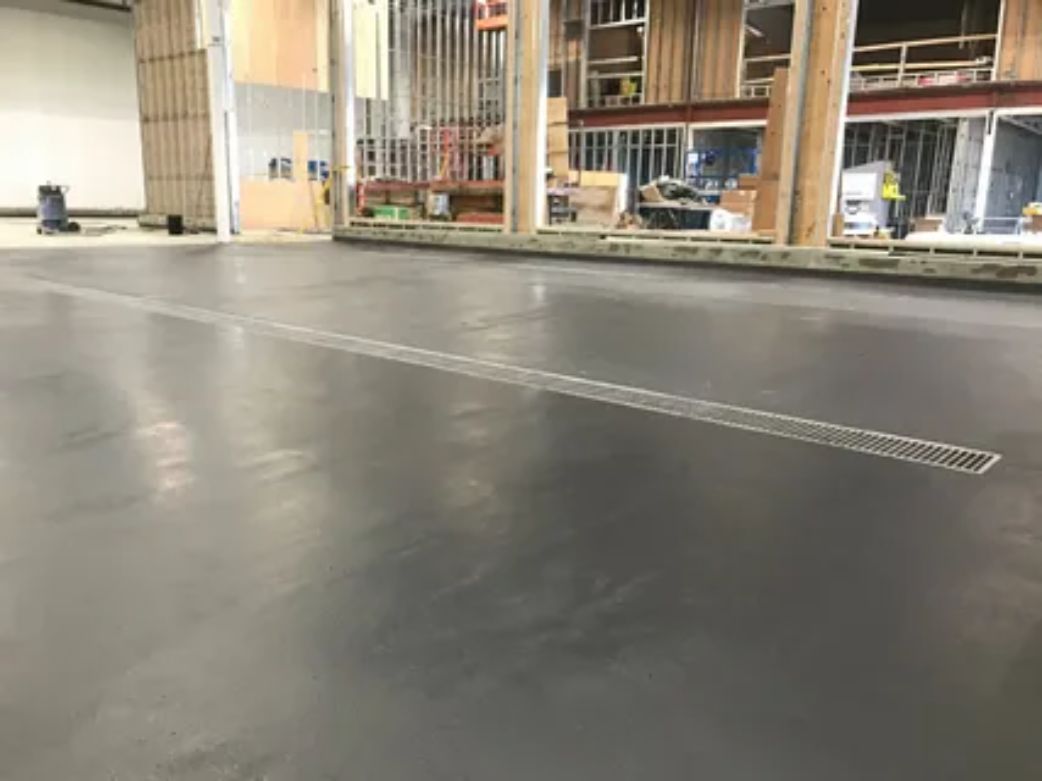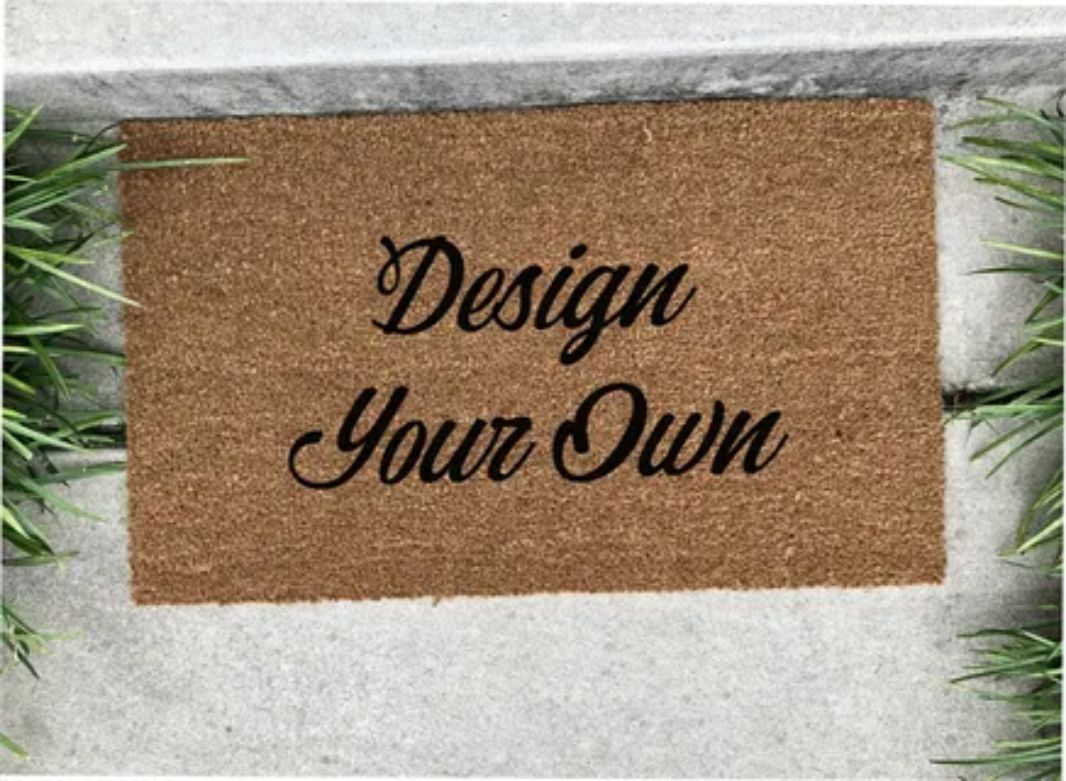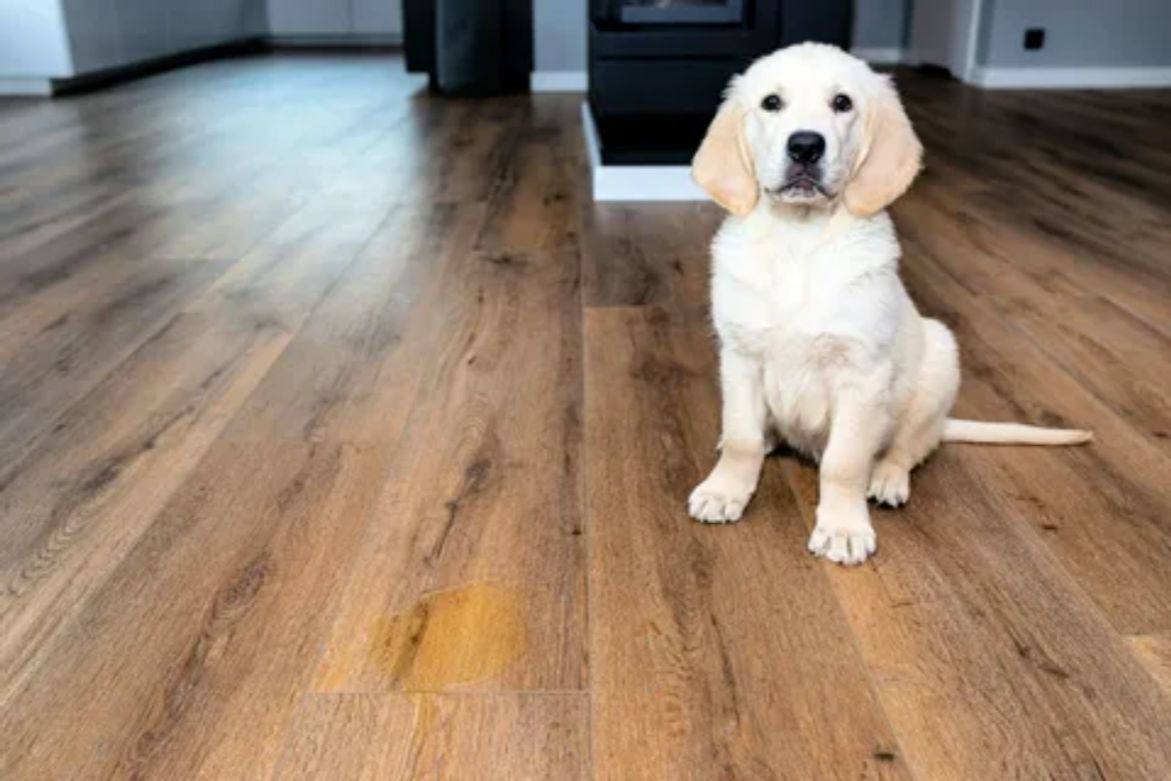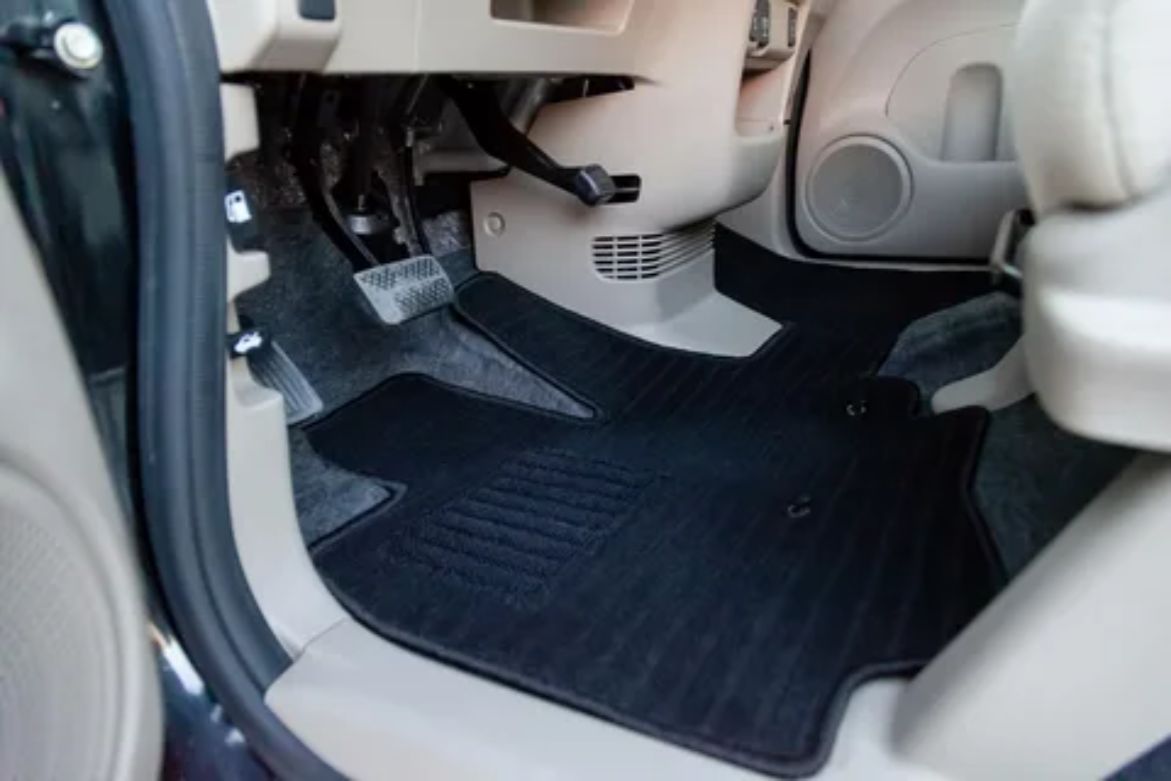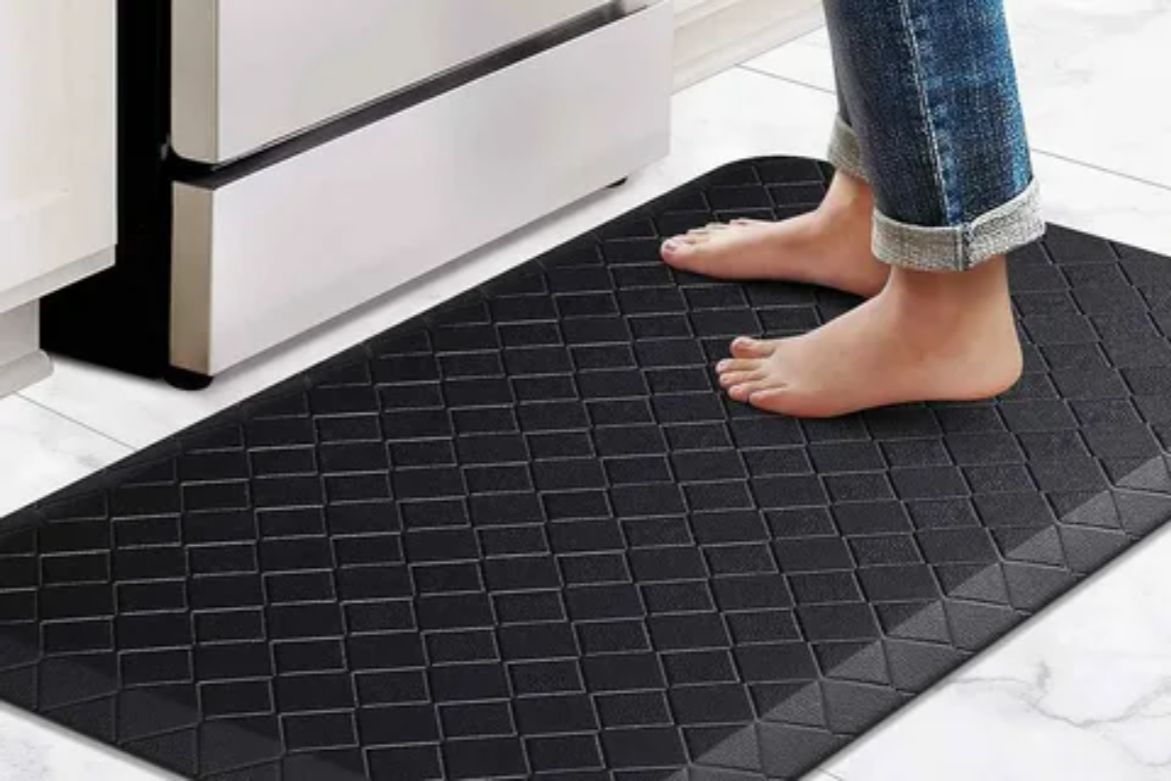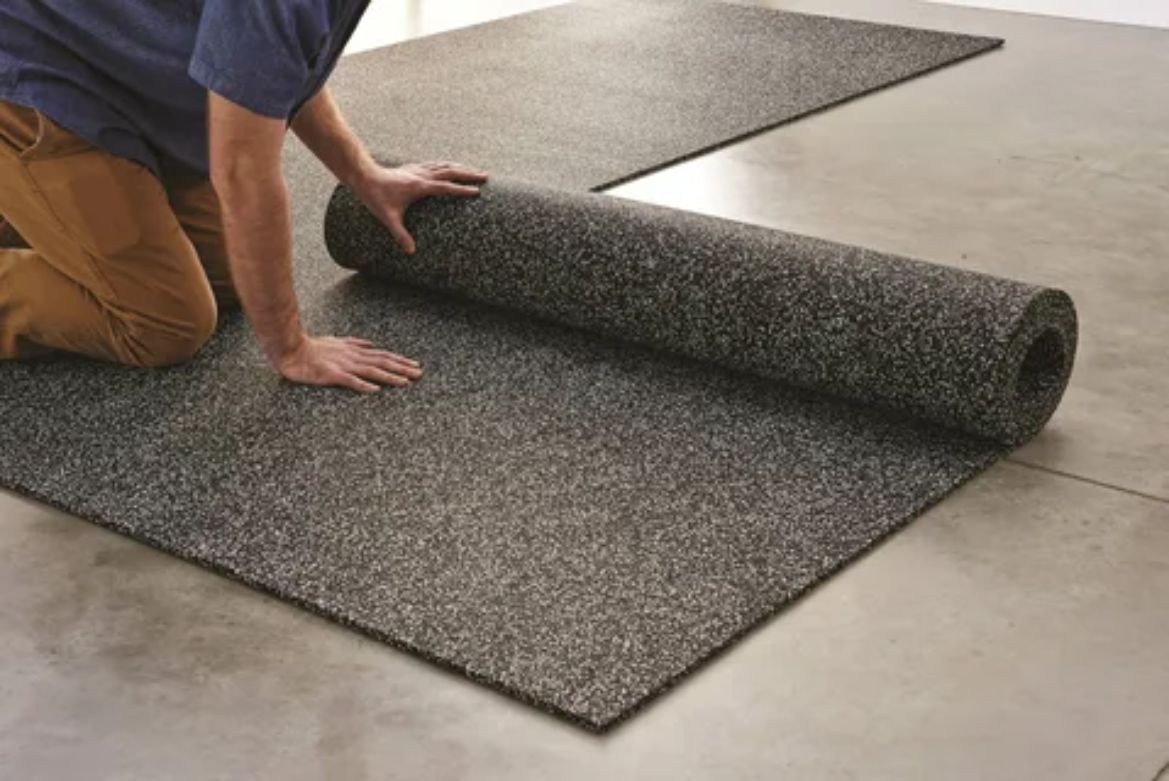Home gyms are gaining popularity as they save time, are private, and offer the convenience of exercising at any time. One of the first things when building a workout area is deciding on the appropriate flooring, though. Most houses have carpets, so most want to know if it’s easy to just lay rubber gym flooring over the carpet.
The concept is logical. Carpets feel comfortable, but they are not designed to bear heavy machines, moisture, or gym use. Rubber flooring is strong and easy to clean. Topping carpet with it appears to be a temporary fix, particularly for renters who need a non-durable installation.
This blog explores whether it’s truly practical. We’ll cover why people choose Rubber Gym Flooring Over Carpet, the challenges involved, carpet types, and the benefits of rubber flooring. We will walk you through the safest, best way to install a durable home gym floor.
Let’s explore more!
Why Do People Want Rubber Gym Flooring Over Carpet?
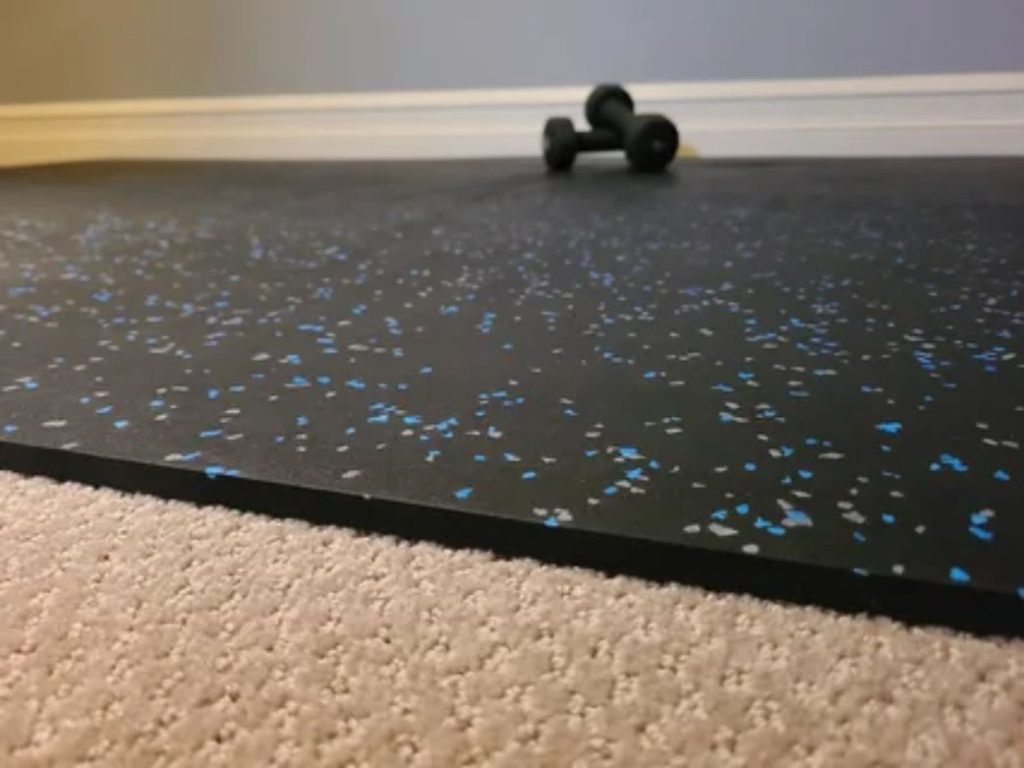
The carpet is comfortable but not firm enough for exercise. Rubber mats offer support for weightlifting, aerobics, and stretching to avoid slipping and injury.
Another important consideration is the protection of the carpet. Spills, sweat, and fallen weights can stain or discolor fibers. Rubber acts as a buffer, protecting homeowners from the expense of replacing carpet.
For tenants, the draw is instant use. Rather than tearing up carpet, rubber tiles can be put down and easily taken up without harming the room. This portability is ideal for apartments or multifunctional rooms.
Convenience enters the picture as well. Interlocking mats are very easy to install, and these mats don’t need any special tools.
Briefly, stability, carpet protection, and simplicity of setup are the primary motivators. Rubber flooring provides these advantages, but the surface below—particularly thick or soft carpet—may influence performance and safety.
Let’s dig a little deeper!
Challenges of Installing Rubber Gym Flooring Over Carpet
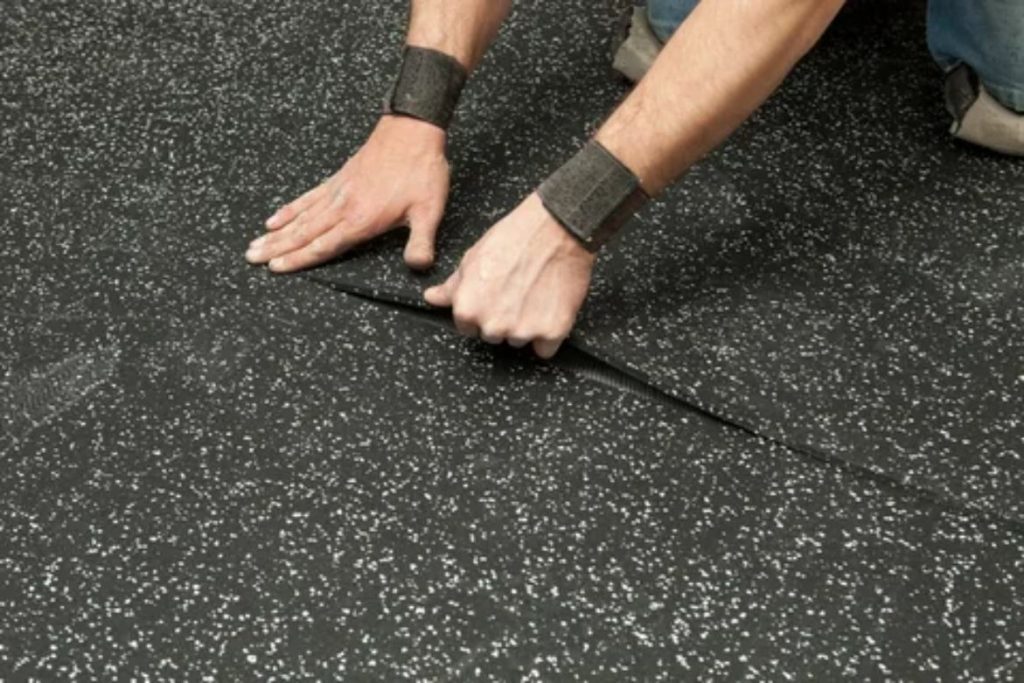
Rubber flooring is strong, but installing it directly over carpet has some disadvantages. The largest drawback is stability. Heavy or thick carpet compresses, which makes mats shift or sag under weight. This provides an uneven surface that increases risk to workouts.
Support is also an issue. Impact exercises, like jumping or rapid movements, require a stable base. Mats sinking into the carpet absorb energy rather than delivering it back into the body, decreasing performance and causing more injury.
Moreover,
Carpet fibers can be damaged in the long term as well. Heavy weights and mats constantly press down, creating dents or flattening the pile area permanently. If the gym is ever taken out, the carpet will seem worn out. Hygiene is also an issue.
For these reasons, installation directly over carpet usually involves compromises.
Types of Carpets and Their Impact
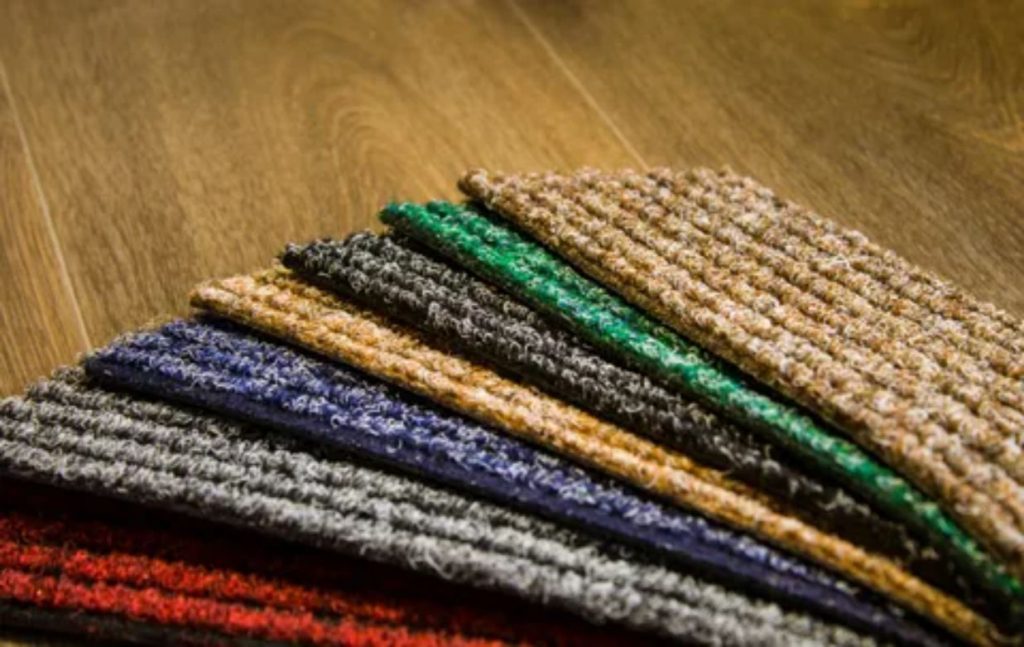
All carpets respond similarly to rubber mats. The carpet beneath your gym mats matters greatly.
Low-Pile Carpet:
- They have short fibers that make the surface quite firm. Rubber mats can lie in place firmly, though not nearly as stably as a hard surface. This is the best choice if direct installation is the goal.
High-Pile or Shag Carpet:
- Extremely soft and thick, these carpets are too soft. Rubber mats compress, move easily, providing instability. Their use directly here is not advised.
Carpet with Foam Padding:
- Much of the carpet sold today contains cushioned underlay. Though pleasant for living rooms, the softness provides an unstable environment for gym installations.
Low-pile carpet can withstand light gym use with protective mats, but shag and padded carpets require extra support.
Benefits of Rubber Flooring in a Home Gym
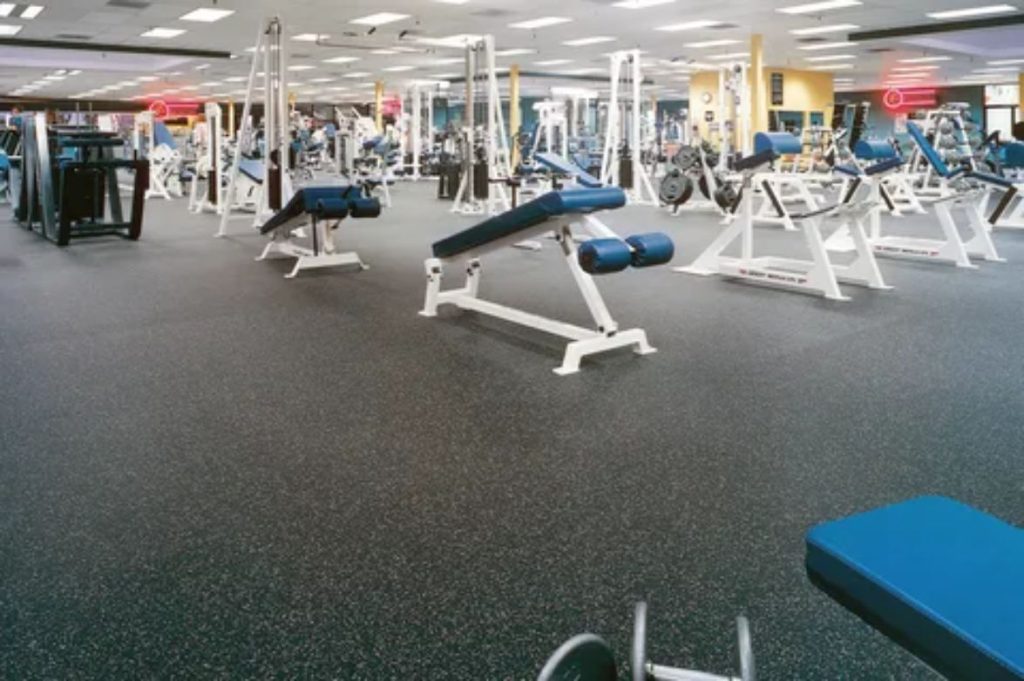
Shock absorption and joint protection:
- Rubber cushions offer shock absorption, reducing stress on joints during tough activity. These cushions make exercise easy and comfortable.
Noise reduction from dropped weights:
- Rubber also lessens noise. Weights dropped, treadmills, and other machinery can be noisy, but mats take impact and vibrations, so noise remains under control.
Easy to clean and maintain:
- Maintenance is very easy. Mats are easily wiped or mopped, keeping a clean workout space. They’re also flexible—interlocking tiles enable you to cover as much or as little ground as desired.
These advantages describe why rubber flooring is the choice of professional gyms and home fitness rooms alike.
Alternatives to Installing Rubber Flooring Directly on Carpet
If your house is carpeted, there are more intelligent ways to install rubber flooring without compromising stability or hygiene.
Plywood Subflooring
- One reliable way is plywood subflooring. By placing sheets of plywood over the carpet, you get a stable, level surface. Rubber mats are set on it to stay stable.
Rubber Tiles with Hard Backing:
- Another option is to use specialty gym tiles with built-in hard backing. These are specially crafted to provide safety in soft carpet, providing a solid surface for workouts.
Each option requires additional effort or expense, but they avoid instability, carpet damage, and hygiene issues. For permanent installations, spending money on a proper base is well worth it.
Installation Tips: If You Still Want to Use Rubber Over Carpet
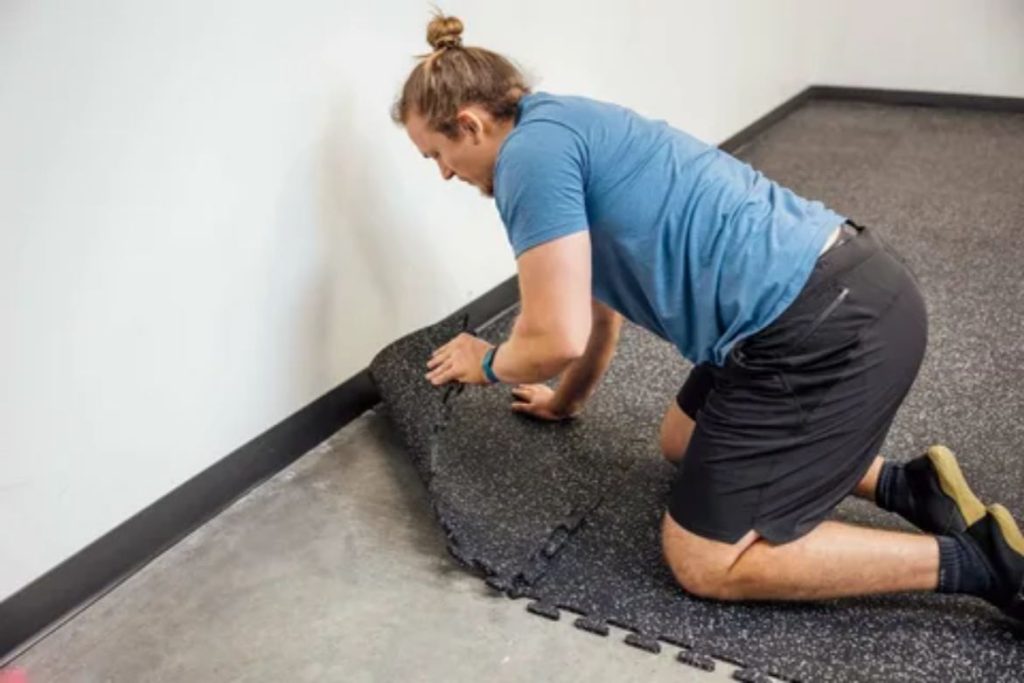
If you choose to put Rubber Gym Flooring Over Carpet, a few steps can improve best results.
Choose thicker rubber mats for better stability:
- Pick thicker mats (a minimum of half an inch). Thin mats sink, but thicker ones give more stability and protection.
- For cushioned carpets, put a plywood sheet under. This forms a stable surface and minimizes shifting.
Secure interlocking edges tightly to avoid shifting:
- Ensure interlocking edges are tight. Loose seams can come apart, leaving gaps that can cause tripping. Well-fitting tiles maintain the surface flat.
Finally, never place very heavy machinery, such as squat racks, on soft patches of carpet. If necessary, employ extra support boards to more evenly distribute weight.
These suggestions will not make carpet an ideal base, but they may create a safer and more convenient temporary gym configuration.
Cost Considerations.
Budget comes into play when installing a home gym. Rubber flooring can vary in price based on thickness and quality. More expensive, high-density mats are used for heavy lifting and last longer.
Installing a plywood subfloor adds to the initial cost but significantly enhances safety and prevents carpet damage. Taking out the carpet and laying rubber directly can mean more in initial costs, but is the longest-lasting option.
In the long term, rubber flooring is money-saving because it protects your current floors and cuts down on carpet replacement expenses.
In short, the initial expense may appear high, but rubber flooring is a valuable investment that protects your home and enhances workout performance.
Expert Recommendations
Flooring professionals advise installing rubber mats over rigid flooring like wood or concrete. They improve superior stability, safety, and durability.
In carpeted environments, direct installation is occasionally permissible over low-pile carpet for minor exercises or temporary installations. Never do it on thick or cushioned carpets, where the mats move and the gear sinks.
For heavy-duty home gyms with heavy apparatus or high-level exercise, experts recommend adding plywood subflooring or stripping carpeting entirely. These approaches are professional-level work that will last for years.
The decision comes down to your style and the objectives of workouts. In case stability, cleanliness, and long-term resistance are a priority, experts advise laying the foundation first before installing rubber.
Conclusion
When creating a home gym, it’s essential to plan everything, especially regarding the floor. Although it looks easy to place Rubber Gym Flooring Over Carpet, it comes with disadvantages, including instability and difficulty in maintaining. Low-pile carpet can be sufficient for light traffic, but high-pile or cushioned carpets usually need additional support. Methods such as installing plywood or eliminating carpet yield improved outcomes and long-term security. In this blog, Brand Mats has tried to cover all the information that is essential for you. Don’t forget to like and share our page.

